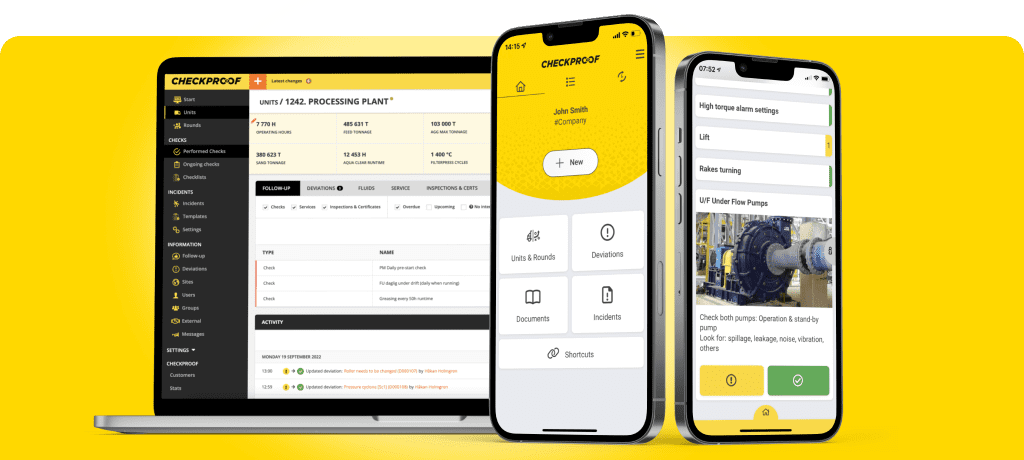Join us at AGG1, St Louis, MO - America's Center Convention Complex: 25-27 March
Where there’s a lack of communication between frontline workers and management in a heavy industry company, there’s also a lack of cooperation and mutual understanding. By successfully bridging this gap, your business won’t only improve workplace safety and employee engagement. You’ll also save vast amounts of money.
Håkan Holmgren is the CEO and co-founder of CheckProof. Throughout his long career in the aggregates industry, he’s seen firsthand the negative impacts of poor communication, documentation, and following up. In fact, that’s a big part of why he and his co-founder created CheckProof in the first place. In this interview, Håkan shares tips and insights to help you bridge the communication gap and get your frontline and office staff to work together toward the same goal.
Why is the communication gap such a serious problem for heavy industry businesses?
– There’s often very little two-way feedback or following up on issues and initiatives between frontline and office. This means management has no way of knowing if safety or maintenance routines are correctly followed on the sites, while field workers feel the office staff don’t understand their day-to-day reality. As a result, it’s difficult to create and maintain a culture of responsibility and accountability where everyone is motivated and pulls together, regardless of where in the organization they work.
What can this lead to in practice?

– Say you’re a machine operator who just started a new job. In your first few days, a manager or senior co-worker shows you how to do certain routine tasks. But if you realize after a while that nothing happens if you skip those tasks, there’s a big risk you’ll end up not doing them as regularly as you should, or at all. Especially if you notice that some of the more experienced team members don’t bother either.
Why is long-term routine compliance so hard to achieve?
– A big part of it comes down to a lack of documentation. There’s a tendency to think certain routine tasks are ‘obvious’ or ‘go without saying’, but that can mean very different things to different people. If we take maintenance routines as an example, there might be a list of what needs to be done in a binder somewhere. And that’s if the tasks are documented at all. Sometimes, all employees have to go on is what they were told during onboarding. Worst case, the routines depend entirely on a few key staff members who know what to do because they’ve done it for so long. That makes the company extremely vulnerable.
Tip: Learn more in our article on how digitizing your routines can reduce dependence on key employees.
What can the consequences be?
– If a workplace culture develops where staff fail to follow HSEQ routines, the consequences can be fatal. Many of the accidents occurring in heavy industries each year could have been prevented with better routine compliance. I’ve seen a 500-kilogram tire come off a tipping truck because the bolts keeping it in place weren’t fastened properly, which a simple check would have revealed. It was pure luck that no one was injured or worse.
Once frontline staff knows what to do, how can you be sure they actually do it?
– Documentation isn’t just crucial when it comes to instructions but also in logging what’s been done and following up on missed tasks. Digitalization has been a real game changer in this area. Today, with tools like CheckProof, you can assign tasks to specific individuals to make sure nothing falls through the cracks. Pictures and RFID tags help ensure critical tasks are performed on-site and prove it retroactively to anyone who needs to know.
Tip: don’t miss these 6 steps to get your plant ready for unannounced inspections
What can you gain from two-way communication between frontline and management?
– It’s important that frontline workers don’t see digital tools as a way for managers to monitor their work. The feedback, following up, and accountability that these tools enable have to go both ways. If you’re a manager responsible for operations, quality control, HSE, or continuous improvement across several sites, frontline workers are your eyes and ears. Their input is valuable and should be encouraged. Because unless they report deviations or suggest improvements, it’s nearly impossible to address risk factors in time or find and scale up initiatives that can positively impact the entire business. If field staff submit report after report and never hear back, they’ll eventually stop doing it. And if reporting is difficult to do, or takes a lot of their time, they won’t even bother in the first place.
What are the benefits in financial terms?
– When you succeed in motivating frontline staff to follow routines, report defects, and look after machines and equipment the right way, you’ll save money in the long run. One of our customers managed to reduce their maintenance costs per produced metric ton by a third through continuous data-driven optimization. Those impressive results would have been impossible without utilizing digital tools, or getting the frontline teams on board.
How do you motivate staff to improve routine compliance?
– Explaining the ‘why’ is essential when introducing a new task or maintenance routine. You have to make sure it’s clear to frontline employees what the purpose is. Involve them by asking for feedback, and if they suggest relevant changes, implement them. You want to avoid a situation where they see following routines or reporting defects as something they do ‘for the sake of it’. Also, don’t just focus on reminding staff and giving feedback when they’ve forgotten a task. When it comes to motivation, positive feedback for a job well done is much more important.
Can you give a practical example of positive motivation?
– By implementing gamification elements, you can even make it fun. Some companies use our platform to not only monitor their idle time but also engage their frontline teams in a little friendly competition, where the team that reduces their idling the most gets a nice reward. At some sites, idling has gone down by as much as 25%. And of course, reducing excessive fuel consumption leads to big savings for the company, as well as significantly less CO2 emissions.
How can you maintain a high level of compliance over time?
– Even if everyone understands the purpose of routines and is motivated early on, it’s easy to fall into a rut and get blasé about potential safety risks. That’s just human nature. It’s like wearing a helmet when you cycle. You think nothing will happen if you don’t put it on. And 99 times out of 100, it won’t. But that hundredth time, a helmet is the difference between life and death. Would you board an airplane if you heard the engineers say, ‘I’m 99% sure I checked everything’?
– We need to implement the same level of safety in our heavy industry workplaces as we expect from pilots or airplane engineers. Because if something goes wrong and the worst happens, you wouldn’t want that weighing on your conscience for the rest of your life. And since human nature is unlikely to change anytime soon, we need tools for documentation and following up to help us stay safe.
—
Do you want to learn more about implementing positive change in your heavy industry? Download our guide The workplace’s value chain: A psychologist’s 7 steps to lasting behavioral change, where renowned organizational psychologist Martin Carlström shares valuable insights and hands-on tips.
Want to know what CheckProof can do for you?
CheckProof's easy-to-use app makes it easier to do the right thing at the right time. Discover how you can run world-class maintenance that is both cost-effective and sustainable.

Maximize Efficiency with an OEE Monitoring System

Plant Asset Management Software:Maximizing Equipment Uptime

Machine Downtime Tracking: The key to smarter, more efficient operations

CMMS Software: What it is and why it’s key to First-Class Maintenance Operations
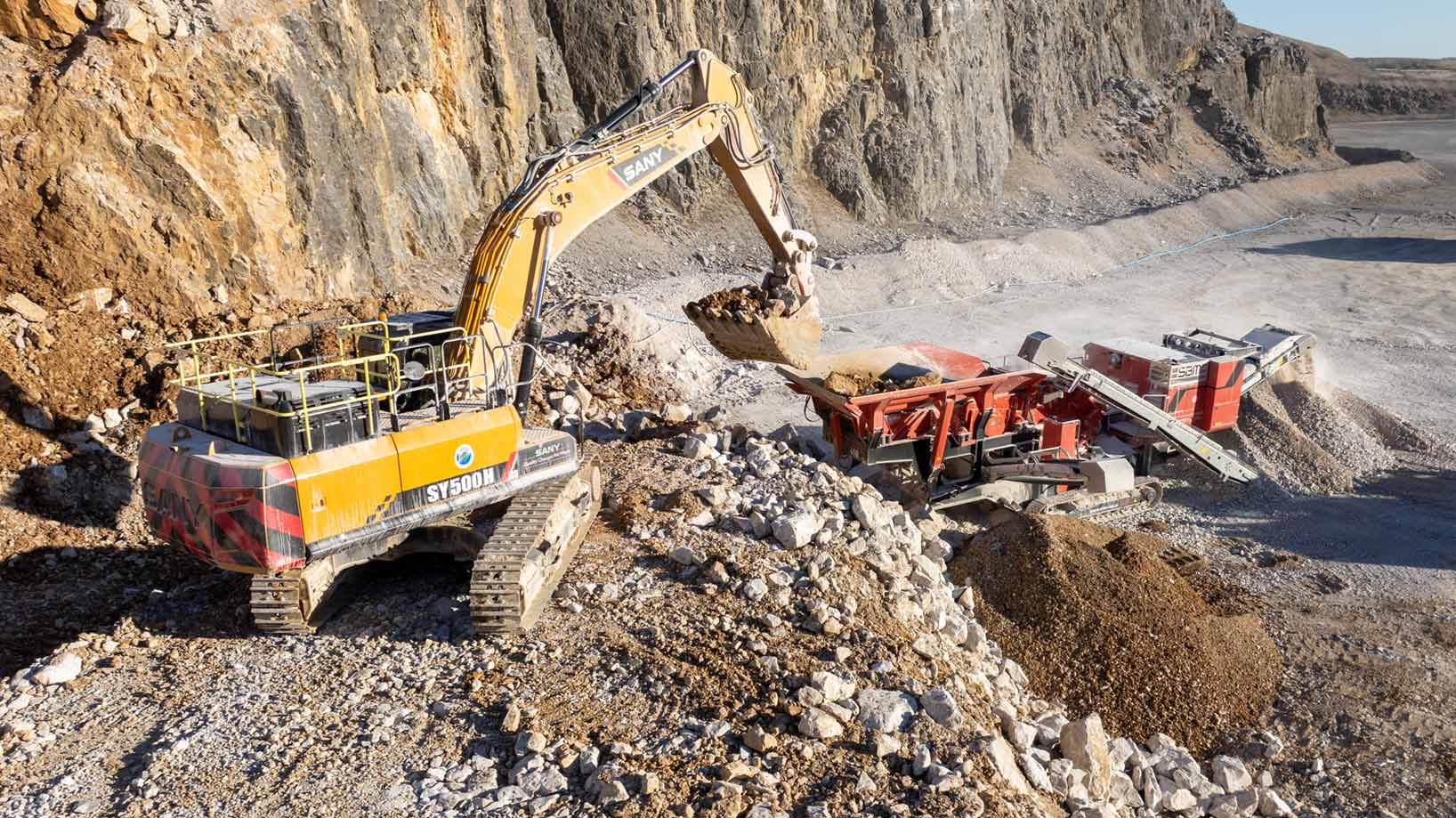
Revolutionizing Compliance: Banner Contracts on managing ISO audits with CheckProof
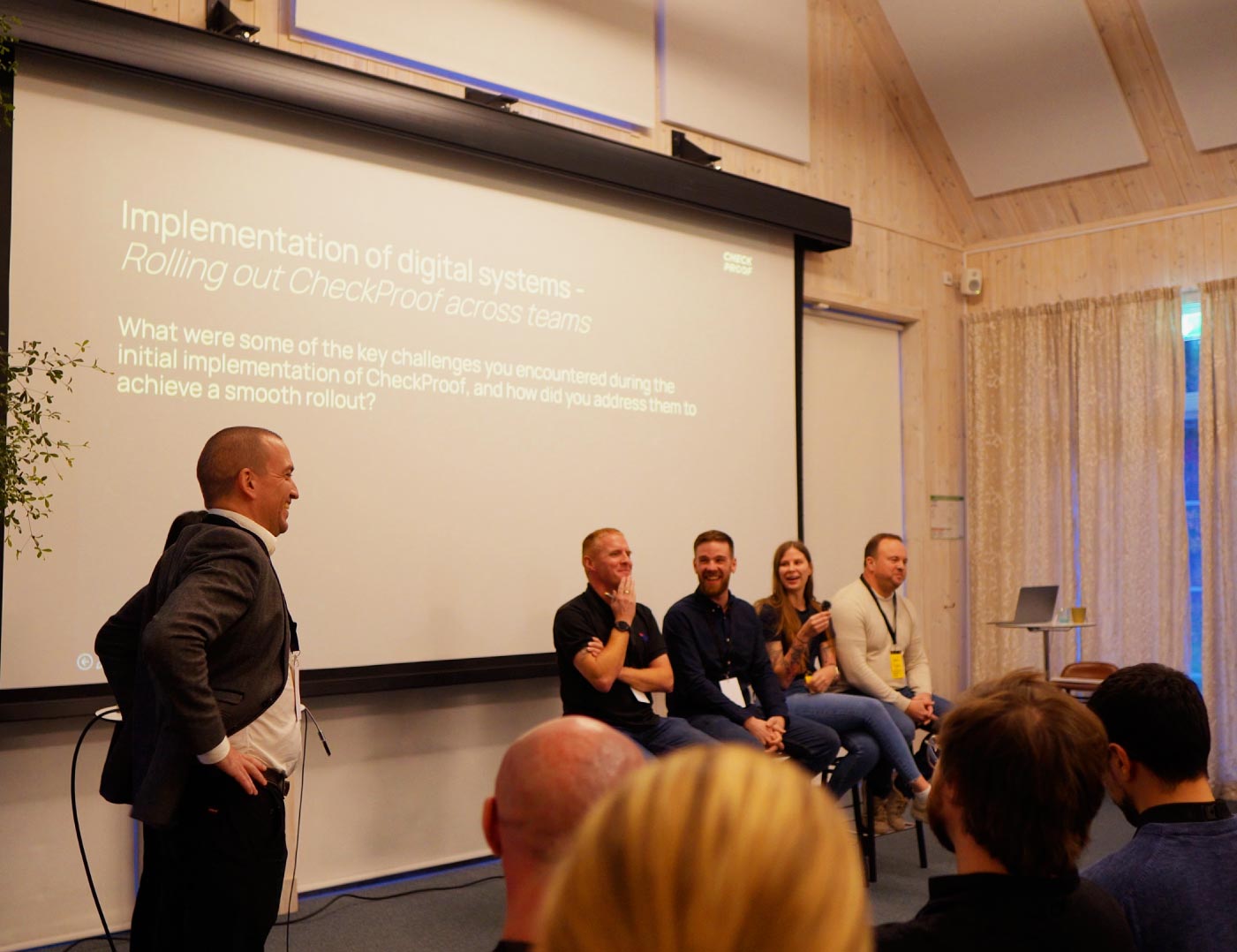
Implementation of Digital Systems: Rolling Out CheckProof Across Teams
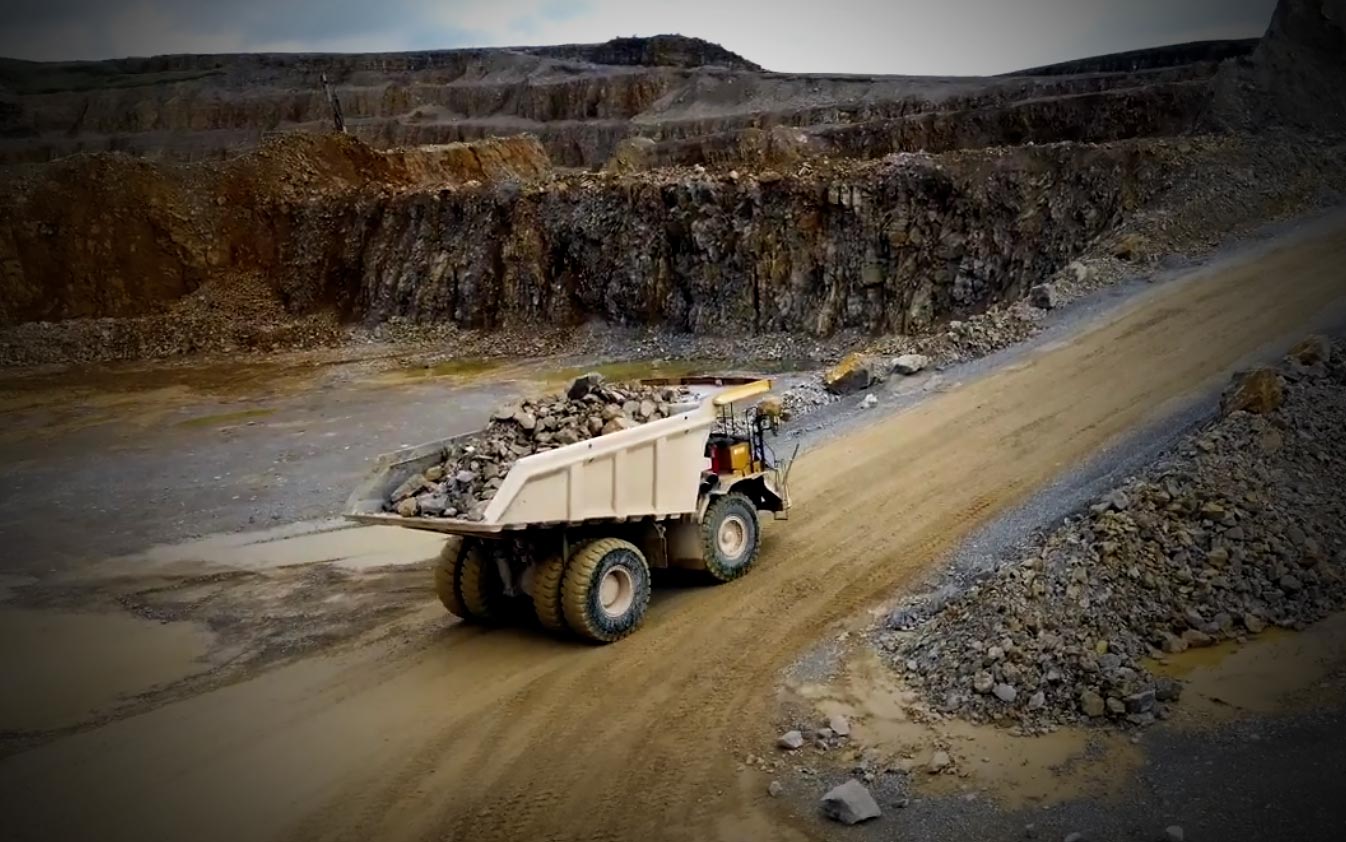
From Fuel Savings to Production Gains: Cemex Germany’s Wins with CheckProof

A Recap of the CheckProof Industry Event & 10th Anniversary Celebration
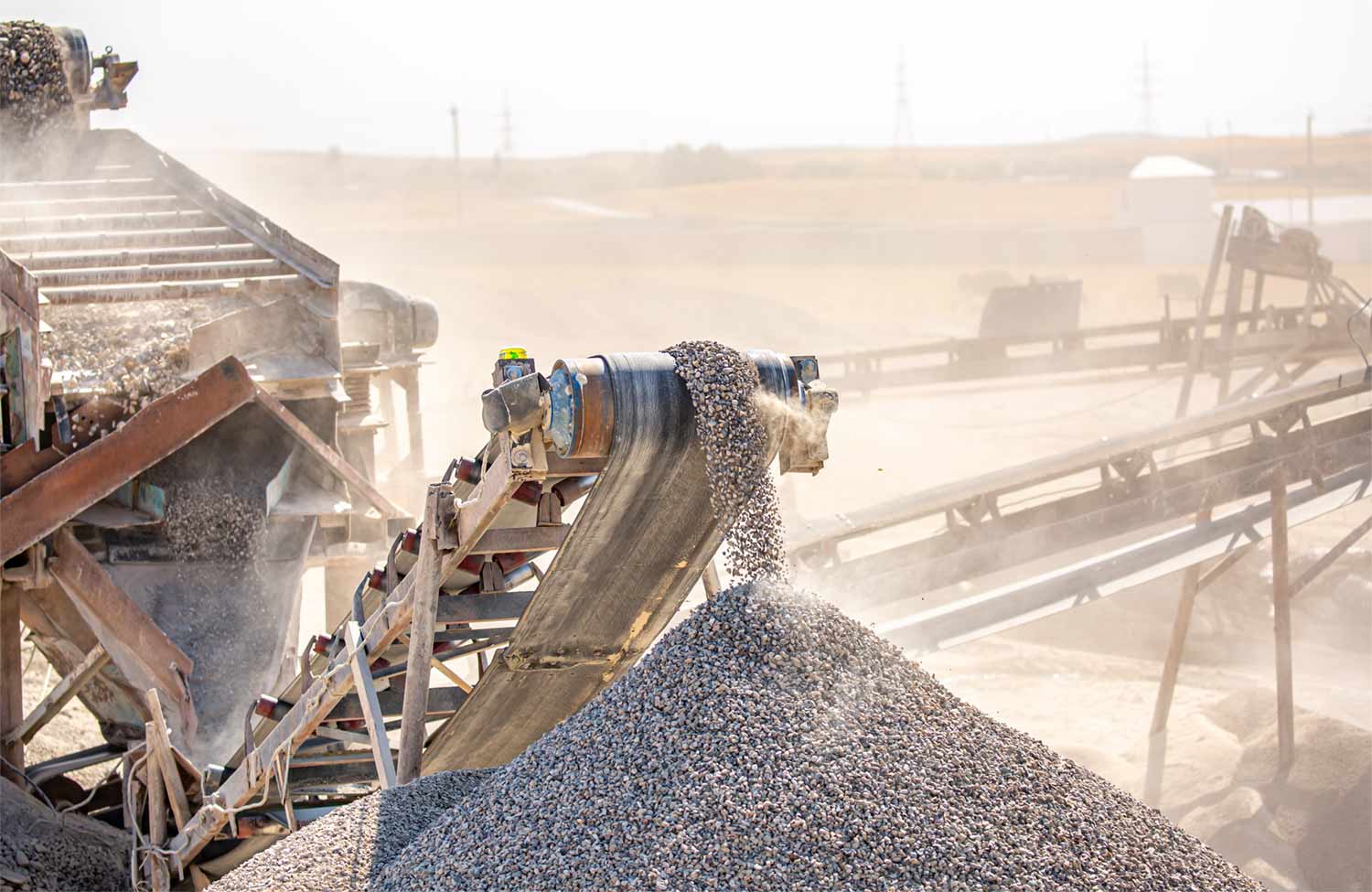
Trend Report: Key moments in the Construction Materials industry (2014–2024)




